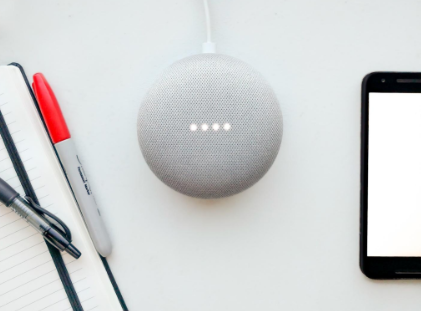
The more progress we are making in the technological world, the more comfort we plan on getting in our daily lives. An example of this is the smart home audio-visual systems which can be automated and accessed with a command of your voice or through your mobile phones – even when you’re not at home.
In 2021, it was found that there were 258.54 million smart homes in the world, which screams a lot of advancement in the world. There are many applications of smart home systems. Still, in this article, we’ll discuss the smart audio-visual system and how to optimize it efficiently so that you can have entertainment with more comfort!
Basics of Smart Home Audio-Visual System
If you’re reading this article, we can make two guesses about you;
- You have a smart audio-visual system, or
- You’re planning to buy one.
So whatever your situation is, it is a great idea to have proper knowledge about it, which will help you to know what you’re dealing with. Plus, it will ease up the process of optimization.
Simply put, a smart audio-visual system consists of a bunch of entertainment devices that can be controlled by smart home apps or personal assistants. If you want to read about audiovisual devices in-depth, click here.
Anyways, these devices are connected to a controller, a device (such as Alexa), or a mobile app. Through this, you can control or optimize the audio-visual devices. Hopefully, that gave you a basic context of the topic. So now, let’s see how you can optimize this system to unlock its full potential.
Evaluation of the Current Setup
There are a couple of things that must be checked before starting the process of optimization. Let’s take a look at them;
Make a List of Devices You Own
First, you would have to make a ‘list’ of all the entertainment equipment you have, which can be your sound system, TV, projector, etc. Here’s a pro tip that will save you time later; note down the device’s model, features, and specifications.
Inspect the Devices
Once you are satisfied with the list you made, inspect what makes the device run, so you’ll have to make a ‘background check.’ This can include an inspection of the cables to ensure that they are not frayed, but if you see any damage, replace them instantly.
Test the Quality
Since we are concerned with audio-visual devices, you must check their sound and image quality of them. You can play a show or movie that you’re familiar with and pay close attention to the audio and video elements, and while doing so, answer these questions;
- Is the image quality crisp or blurry and pixelated?
- Is there any distortion or echo in the audio?
- Is the sound clear and balanced?
Have Clear Requirements
Having proper requirements, such as a fixed budget, is necessary while optimizing the smart audio-visual system – just like it’s necessary while making any decision. Make a list of the devices that you need to buy, and don’t forget to mention the expected cost of installation and setup there.
Also, figure out what are your other requirements such as;
- Size and layout of entertainment space,
- Audio and video needs, etc.
Make Smart Purchases
If you plan on buying a new TV, you must buy the one that has;
- Suitable screen size according to the layout of your space,
- Have a 4k or 8k resolution (if budget allows it), as these devices have crisp and detailed images, and
- Must have HDR support
For buying a proper sound system, keep these things in mind;
- Find an audio setup that will suit your space or preference, and
- Consider the power and wattage of the speakers.
Similarly, if you are purchasing other audio-visual devices, do the proper research beforehand. Plus, make sure to buy the one that fulfills your budget and requirement (that was set in the earlier steps).
Set Up the System Correctly
Let’s look at how you can set up both the audio and visual systems more efficiently.
Sound System
It is important to set up the sound system correctly to optimize the audio-visual experience fully. Follow these steps to do that;
- Position the speakers according to the recommended guidelines. Place the front speakers at ear level so that sound is more balanced.
- Some sound systems have calibration tools; to use them, follow the manufacturer’s instruction manual. This will help you adjust the speaker level, distance, and equalization settings.
- Explore different sound modes that work for various types of content like movies, music, gaming, etc.
Visual System
To enhance the picture/video quality of your TV or projector, conduct these optimizations;
- Almost every smart TV has a menu of picture settings. Please open it and make adjustments in terms of brightness, color, contrast, etc.
- On your smart device, check the motion smoothing mode. If it’s available, disable it, as it can detract from the original experience of the show.
- Enable the HDR mode if your device supports it.
Enhance Your Smart Home Experience
Install a smart home hub to connect and maintain your audio-visual devices. By doing this, you’ll be able to get control over all of your entertainment devices remotely so that if you ever forget to turn off the TV while going out, use a smart home app to do it.
Since you can connect all of the devices, a movie night would be a great idea, where all family members can enjoy the movie from the comfort of their room (plus, no one’s privacy will be invaded.) Another cool thing about this is that everything can be controlled through your voice, so you’ll have to say, ‘Play my favorite playlist’ to jam to your favorite music.
Here are some other ways to make your life easier with a smart home audio-visual system;
- Assign different names to your devices and create groups to control them easily. Let’s say you have a living room speaker; you can name it ‘living room audio,’ or you can create a group for all of your entertainment devices in a room and call it ‘room 1 entertainment hub.’
- For example, you can name your living room speakers ‘living room audio’ or create a group called ‘living room entertainment hub’ that will include all of the systems.
- Get familiar with the smart home app and customize it according to your needs.
Concluding thoughts…
It doesn’t look easy to connect all of your audio devices with her smart home hub and optimize them properly, but it’s very simple. To get started, all you have to do is to make some realistic requirements and make smart purchases.
For this, you’ll have to set your budget so you don’t go overboard. Connect all of your devices to a smart home hub, optimize everything, and voila… you’ll have a comfortable experience for a long time.



